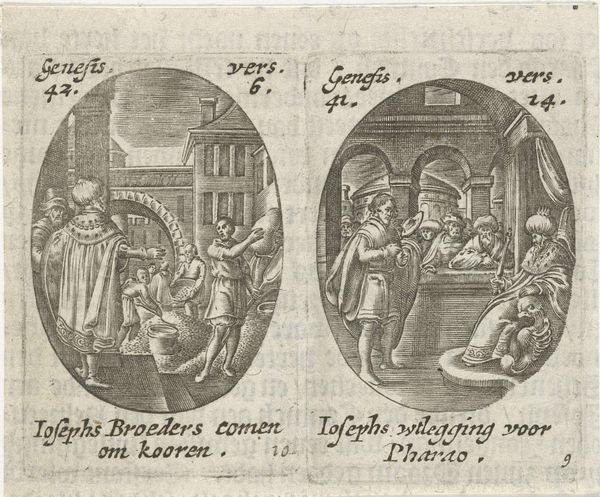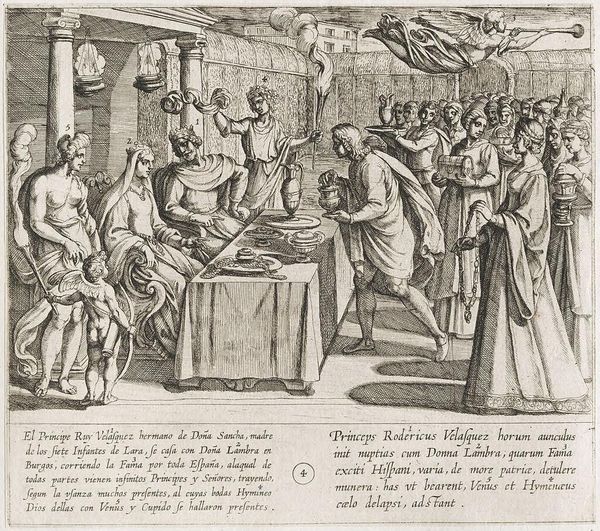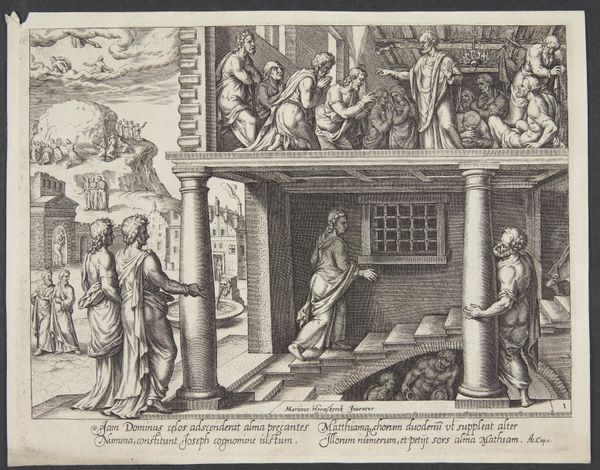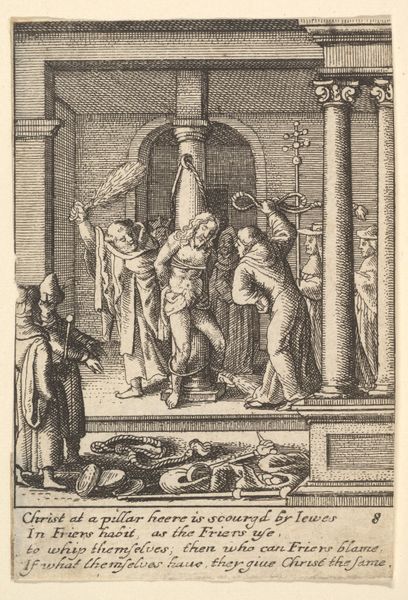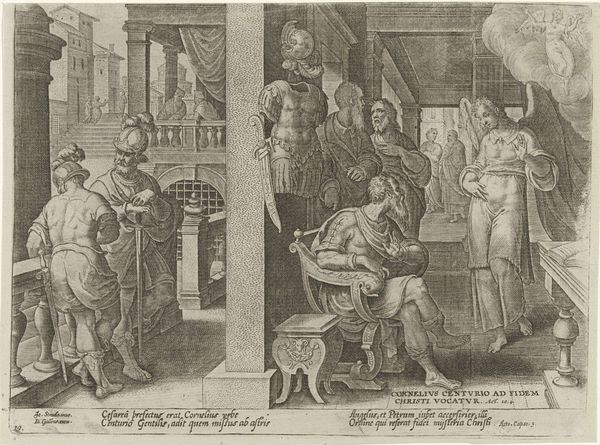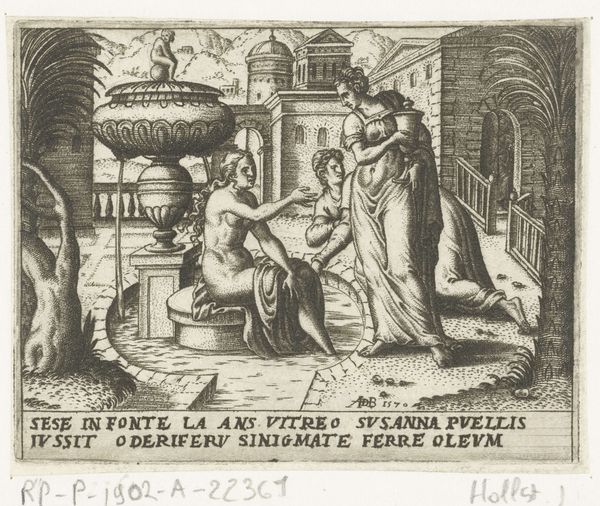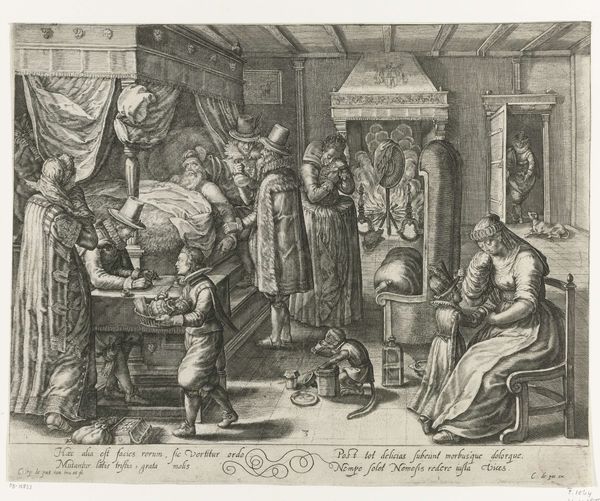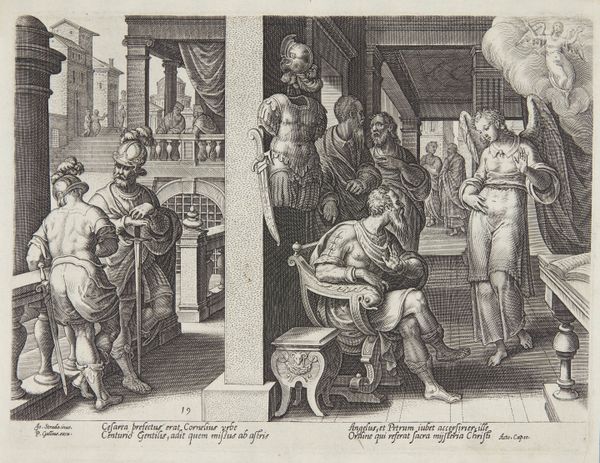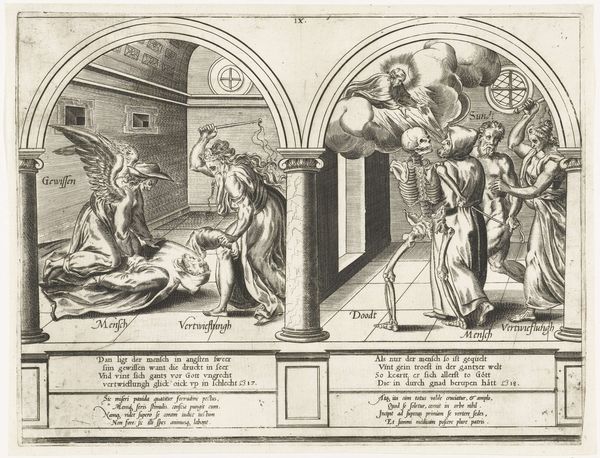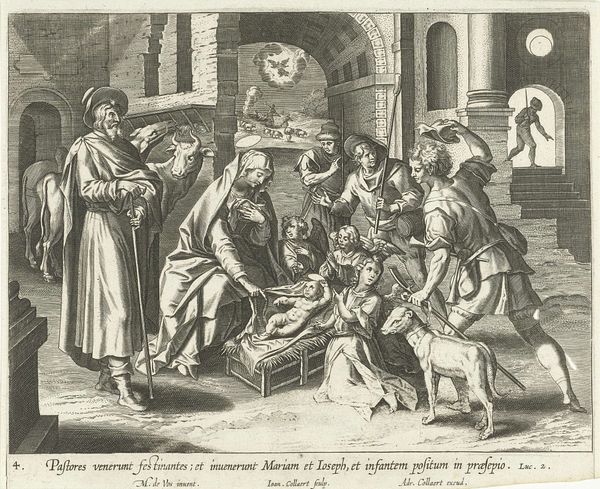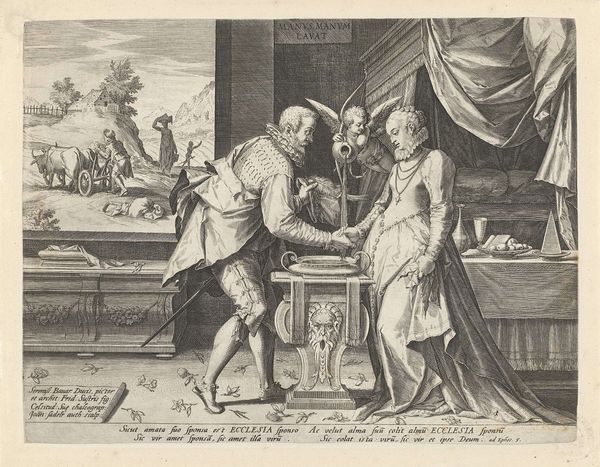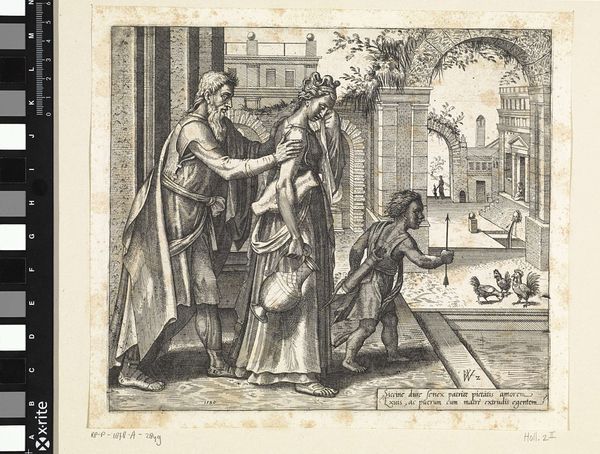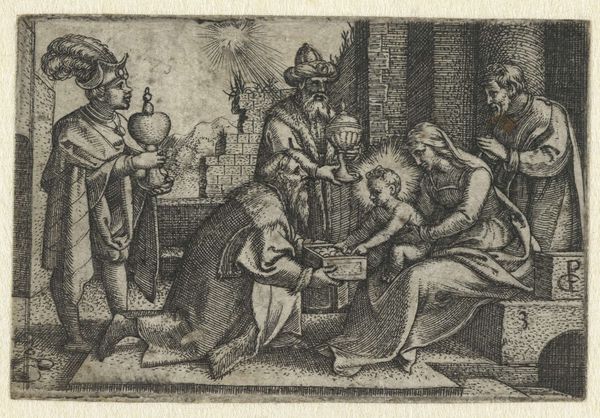
print, engraving
# print
#
figuration
#
line
#
genre-painting
#
history-painting
#
northern-renaissance
#
engraving
Dimensions: height 67 mm, width 85 mm
Copyright: Rijks Museum: Open Domain
Editor: Here we have Theodor de Bry’s “Vrouw met kind in een smidse,” or “Woman with child in a smithy,” made in 1596. It's an engraving, very detailed with all those fine lines. I am struck by how it seems to idealize labor; there's a certain calmness despite the active scene. What strikes you when you look at this image? Curator: This engraving gives us a glimpse into the social fabric of the late 16th century. De Bry often documented cultural encounters, but here, he turns his eye to the domestic sphere, a critical but often overlooked site of labor. Consider the inscription at the top: "QUEM NVLLA PERICVLA TERRENT" ("Whom no dangers terrify"). Who does it refer to? Is it the male blacksmith at work, or the woman and child who stand close by? Editor: It makes me think that both the blacksmith and the woman holding her child in a hot, dangerous forge equally possess this quality. Was De Bry consciously challenging the common social perceptions of the era, offering an early feminist message through this piece? Curator: Exactly. What does it mean to represent this traditionally masculine space with a family at its center? De Bry is inviting us to question the perceived boundaries of gender roles and the value ascribed to different forms of work. Consider also the gaze: the mother looks out, engaging the viewer, asserting a presence. How might this composition challenge the dominant narrative of women’s roles in that period? Editor: I had not noticed the active gaze, I had been taking for granted that the engraving presents her passively, and, honestly, invisibly, next to all that 'labor'. It completely shifts how I viewed it! I'll never look at early Northern Renaissance art the same way again. Thank you. Curator: That's the power of engaging with art critically, right? Shifting perspectives, seeing beyond the surface to understand the layers of meaning embedded within.
Comments
No comments
Be the first to comment and join the conversation on the ultimate creative platform.
